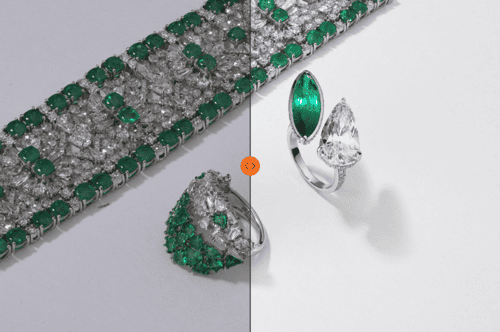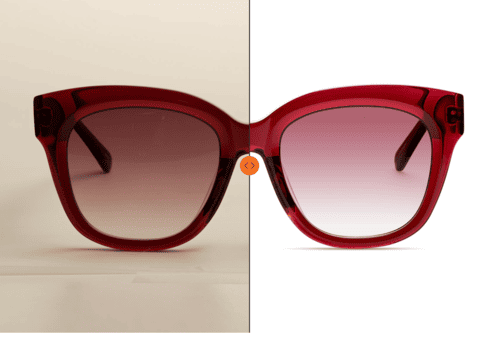The Future of eCommerce with AR and VR Immersive Technologies
For years, the idea of shopping through Virtual Reality (VR) or using Augmented Reality (AR) to visualize products at home has been more science fiction than a legitimate marketing strategy. Nowadays, even though the technology is still in its early stages, its potential is undeniable.
AR and VR aren’t replacing traditional e-commerce — they’re expanding its boundaries. The innovators who are experimenting with immersive experiences today are shaping what might just be the next big evolution in retail.
This isn’t an overnight revolution. It’s a slow but steady development — one that could redefine how businesses engage with their customers in the years to come. Let’s explore what’s happening now, what’s holding it back, and why it matters.

What Is VR Technology and How Does It Work in eCommerce?
Virtual Reality (VR) offers an all-encompassing digital environment where users can interact with simulated spaces as though they were physically present. In e-commerce, this means creating virtual stores, showrooms, or product demos that customers can explore via VR headsets like Apple, Meta Quest 3, HTC Vive, or Sony’s PlayStation VR.
While VR technology promises unmatched immersion, it is far from mainstream. As of 2025, global VR headset adoption remains limited, with an estimated 20 million headsets sold annually, a fraction of global smartphone sales. For most businesses these numbers are hilarious, however, this is a good sign for those ready to embrace innovations first. Let’s take a look at some of them:
Alibaba’s Buy+: A VR shopping experience launched in 2016, allowing users to browse virtual aisles, examine products in detail, and purchase directly.
Nike’s Virtual Store in the Metaverse: Customers can now “walk” through Nike’s virtual retail space, try on digital shoes, and even purchase virtual goods for their avatars on platforms like Roblox.
What Is AR Technology in E-Commerce?
Augmented Reality (AR) overlays digital elements onto the physical world, offering a practical and accessible way to enhance shopping experiences. Unlike VR, AR only requires a smartphone or tablet, making it a more scalable solution for retailers and consumers alike.
AR has already seen significant uptake in e-commerce, with platforms like Shopify and Snapchat integrating AR tools directly into their ecosystems. From the AR-powered “try-on” experiences to virtual home staging, this technology is proving its worth.
Examples in Action:
- IKEA Place: This app allows users to visualize how furniture fits into their living spaces using their phone camera. By 2024, IKEA reported a 30% higher conversion rate for users who used AR to preview products

- L’Oréal’s Virtual Try-On: Partnering with AR leader ModiFace, L’Oréal enables customers to test makeup shades on their own faces via an app or web browser. This not only increases purchase confidence but also reduces product returns.

What Does AR Require?
To create AR experiences, you need a few important things:
- Development Platforms
To make AR apps, developers use special tools like Apple’s ARKit and Google’s ARCore. These tools help them create AR experiences more easily by providing features that track movement and understand the environment.
- 3D Modeling
AR needs realistic 3D models of objects. These models should look just like the real things so that they fit well into the real world. Good 3D models help users see how products would actually look in their space.
- Platform Integration
Many businesses add AR features directly to their online stores or apps. This makes it simple for customers to use AR while shopping, like seeing how a piece of furniture looks in their home or trying on clothes virtually.
- Extra Points
- Tracking: AR uses different methods to keep digital images aligned with real objects. This helps ensure that what you see on your screen matches what’s around you.
- Animation: For a good AR experience, animations need to look natural. This makes the interaction feel real and engaging.
- Multimedia: Adding sounds or videos can make AR experiences even more interesting and fun for users.
In short, creating AR involves using the right tools, making realistic 3D models, integrating these features into apps or websites, and ensuring everything works smoothly together.

AR vs. VR for Online Shopping: A Comparative Insight
Though both AR and VR can enrich the online shopping experience, their differences shape how they are used in e-commerce:
VR (Virtual Reality)
- Fully immersive, offering a complete digital environment for exploring products and brands.
- Ideal for creating brand experiences and virtual showrooms but limited by its need for specialized hardware.
- AR is driving practical adoption and near-term results for e-commerce, while VR offers a more futuristic, albeit less accessible, vision. For most businesses, AR represents a stepping stone toward the immersive future that VR promises but has yet to fully deliver.
AR (Augmented Reality)
- Practical and accessible, requiring only a smartphone or tablet.
- Great for enhancing specific parts of the customer journey, like visualizing products or personalizing purchases.
- AR is driving practical adoption and near-term results for e-commerce, while VR offers a more futuristic, albeit less accessible, vision. For most businesses, AR represents a stepping stone toward the immersive future that VR promises but has yet to fully deliver.
The Benefits of VR & AR for Retailers
Enhancing Consumer Engagement with Immersive Experiences
Imagine walking into a luxury store, browsing items, and interacting with them — all without leaving your living room. VR makes this possible, turning passive browsing into active exploration. Similarly, AR lets customers “try on” products virtually, from makeup to clothing, reducing the uncertainty that often comes with online shopping.
Studies show that immersive shopping journeys create stronger emotional connections with brands, increasing customer satisfaction and loyalty.
Boosting Conversions with Virtual Try-Ons
AR-powered virtual try-ons significantly boost purchase confidence. For example, beauty brands like Sephora and fashion retailers like ASOS report higher conversion rates and fewer returns when customers use AR to visualize products.
- Increased Trust: Customers are more likely to purchase when they can see how products fit into their lives.
- Rich Data for Businesses: AR and VR interactions generate detailed analytics — how long customers engage, which products they explore, and what features they prefer. This data enables hyper-targeted marketing and smarter inventory decisions.
Current Barriers to Adoption of VR and AR Technology

Despite the transformative potential of AR and VR in e-commerce, several barriers continue to slow their adoption:
Privacy and Data Security Concerns
Both AR and VR rely heavily on data collection to function effectively, which raises important privacy questions:
- Personal Data Collection: AR apps often require access to camera feeds, location data, and user preferences. Similarly, VR experiences collect detailed behavioral data, including gaze tracking, movement patterns, and interactions within virtual spaces.
- Potential Misuse of Data: In a survey by PwC, 62% of consumers expressed concerns over how companies handle their personal data in immersive environments. With immersive technologies, the volume and sensitivity of collected data elevate the stakes for breaches and misuse.
- Regulatory Challenges: As AR and VR evolve, regulators are still catching up. Businesses must navigate an unclear and evolving legal landscape, particularly in regions with strict data privacy laws like GDPR in Europe or California’s CCPA.
Consumer Education
Many shoppers are unfamiliar with how AR and VR work or why they should use them. Businesses must invest in:
- Demonstrating Value: Showing customers how AR and VR improve their shopping experience.
- Simplifying Experiences: Designing and continuously improving intuitive interfaces that make immersive technologies easy to use, even for tech novices.
VR-Specific Challenges
High Cost of VR Equipment: VR headsets like Meta Quest 3 or HTC Vive Pro remain pricey. This makes it challenging for businesses and consumers alike to justify the expense.
- Development: Creating high-quality VR experiences demands skilled developers, expensive 3D modeling, and ongoing technical support, which many businesses find prohibitive.
- Low VR Penetration: Only about 1 in 100 consumers globally own a VR headset, and most of these are gaming-focused devices, not tools for shopping.
- Technical Knowledge: VR setups can be intimidating for less tech-savvy customers, creating a barrier to widespread use.
- Internet Requirements: High-quality AR and VR experiences require fast, stable internet connections — something not universally available, especially in rural or underdeveloped areas.
AR-Specific Challenges
While AR is more accessible than VR, it comes with its own set of barriers:
- Device Limitations: Not all smartphones are AR-enabled, and older models may not support high-quality AR experiences. This limits the reach of AR applications in e-commerce.
- Inconsistent User Experiences: AR experiences can vary significantly depending on the device, with issues such as laggy performance or poor rendering affecting user satisfaction.
- Integration Costs: Retailers must invest in 3D modeling, AR development platforms (like Google’s ARCore or Apple’s ARKit), and seamless integration with their existing e-commerce systems, which can be costly and time-consuming.
Emerging Opportunities Of VR and AR in the Next Decade
While current barriers slow widespread adoption, the next decade promises to be transformative for AR and VR technologies in e-commerce. Key advancements in affordability, accessibility, and innovation are positioning these tools as integral to the future of retail.
Growing Affordability and Accessibility
The cost of AR and VR technologies is steadily decreasing, driven by advancements in hardware production, software development, and economies of scale.
Leading companies like Meta, Apple, and Sony are working to make VR headsets more affordable. New devices from Meta cost significantly less than earlier models, with entry-level options designed to target casual users.
AR’s reliance on smartphones means it already has a massive audience. As AR technology becomes native to flagship devices, such as Apple or Samsung’s AR-enabled Galaxy line, adoption will rise without the need for additional hardware investments from customers.
Platforms like Shopify, Snap AR, and Unreal Engine are offering turnkey solutions for businesses, lowering the technical and financial barriers for brands to implement AR and VR.
As prices fall and more businesses experiment with these technologies, consumer awareness and adoption will naturally increase, creating a cycle of growing demand.
Future Innovations in Virtual Stores
Virtual stores represent one of the most exciting developments in the next decade, offering retailers entirely new ways to connect with customers.
Imagine entering a digital version of your favorite department store, where you can browse products, pick up virtual items, and receive tailored recommendations. Retail giants like IKEA have already launched virtual store pilots, and this trend is expected to expand.
Or virtual stores that can adapt to individual users, tailoring layouts, product recommendations, and even virtual sales assistants based on browsing history and preferences. Sounds exciting, isn’t it?
Innovations in 5G and cloud computing already enable real-time collaboration in virtual spaces. Imagine customers could shop with friends across the globe in the same virtual store or receive live styling advice from virtual or human assistants.
AR-Powered Shopping Experiences from the Future
Augmented Reality is evolving rapidly, bridging the gap between digital and physical shopping.
Even now you can see how some retailers are creating hyper-personalized AR experiences. For example, Nike allows customers to virtually try on shoes in their exact size, while Sephora offers AR mirrors for testing makeup virtually.
Brands like Wayfair and Home Depot are enhancing the home goods shopping experience by letting customers customize furniture dimensions, colors, and layouts in their physical spaces via AR.
What else to expect? Probably, the rise of AR and VR on social media. Imagine platforms like Instagram, Snapchat, and TikTok are integrating AR into ads, allowing users to try products instantly, creating a seamless path from discovery to purchase.
Artificial intelligence will play a significant role in enhancing AR and VR shopping. AI-powered virtual assistants could offer personalized recommendations, track customer preferences, and provide real-time support in virtual stores.
The next decade is set to be a golden era for immersive technologies in e-commerce. Growing affordability, paired with breakthroughs in AR and VR innovation, will make these tools more accessible to businesses and consumers alike. From virtual stores that mimic real-world shopping to AR try-ons that eliminate guesswork, the opportunities for businesses to engage their customers are limitless. But nowadays, this is still very young technology for the most innovative customers from the most innovative brands.
Balancing Innovation with Timeless Strategies
The integration of AR and VR technologies into e-commerce opens up an exciting frontier of possibilities. Virtual stores, interactive 3D models, and VR-powered shopping experiences promise to redefine how consumers engage with brands. However, it's essential to recognize that traditional product photography, with its unmatched ability to communicate quality and brand identity, will remain a cornerstone of e-commerce for decades to come.
Not every business is ready to dive into VR, and not every product requires an immersive experience. High-quality, expertly retouched product photography continues to drive conversions and build trust — a proven method that stands the test of time.
If you’re looking to elevate your visual content strategy, whether through traditional product photography or exploring new technologies, LenFlash is here to help. Let us bring your brand vision to life with tailored solutions that meet your business goals.














